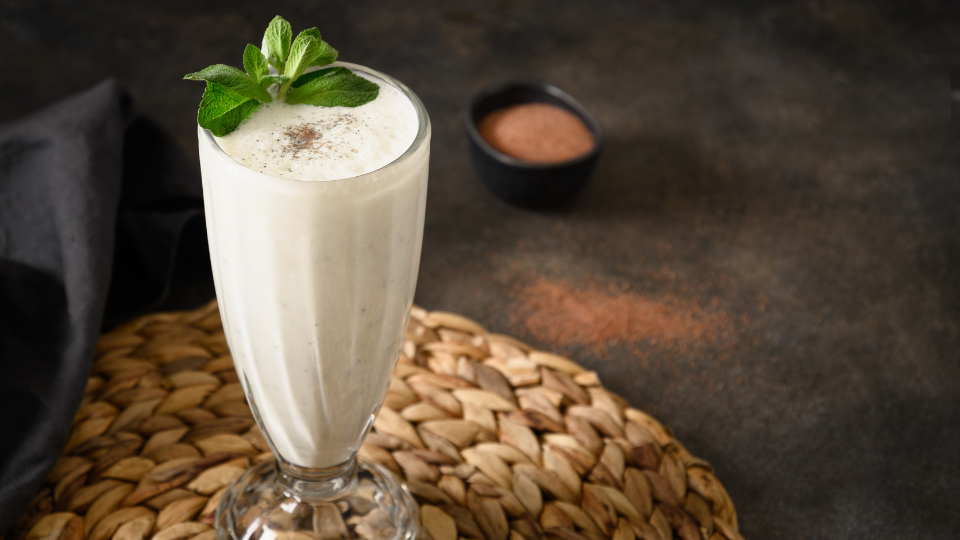Introduction
Few drinks match the refreshing and indulgent charm of a perfectly made lassi. With its creamy texture, vibrant flavor, and cooling effect, lassi delights people across generations and cultures. Among its many variations, mango lassi stands tall as a symbol of both comfort and celebration. Whether you enjoy it after a meal, on a hot summer afternoon, or as a sweet treat with friends, mango lassi bridges tradition and taste like no other beverage. At Maharaja Riyasat, the royal drink receives the care and attention it deserves, making it a signature experience for anyone who loves authentic Indian cuisine and authentic Indian dining at Maharaja Riyasat.
This blog explores everything you need to know about mango lassi—its history, ingredients, cultural significance, and role in Indian dining traditions. We will uncover what makes this iconic drink special, explore its variations, and highlight why Maharaja Riyasat has mastered the art of presenting lassi in a truly regal way. By the end, you’ll not only appreciate this beverage more deeply but also feel inspired to visit Maharaja Riyasat to savor the authentic experience firsthand.
Things to Know Before Enjoying Mango Lassi
Before diving into the details of mango lassi, you should understand its roots, variations, and cultural significance. Each element shows why lassi is more than just a drink—it tells a story through flavor and tradition.
The Origins of Lassi in Indian Cuisine
Lassi ranks among the oldest drinks in Indian culinary history, with origins tracing back more than a thousand years in Punjab. Traditionally, people made it with yogurt, water, and spices or fruit. They enjoyed it as both a refreshing beverage and a digestive aid. Over time, the drink traveled across regions and evolved into sweet, salted, and fruity varieties. To understand its role in Punjabi culture, explore our blog on Punjabi food culture.
Mango lassi rose in popularity during mango harvest seasons, when families blended ripe mangoes with yogurt to create a luxurious seasonal drink. Today, it shines as the most famous variant, enjoyed globally as a symbol of Indian hospitality and culinary creativity.
Why Mango Is the Perfect Fruit for Lassi
Mango, often called the “king of fruits,” offers rich sweetness and a natural aroma, making it the ideal partner for yogurt in lassi. Its pulpy texture blends seamlessly, producing a smooth, creamy consistency. The golden hue of mango lassi adds visual appeal, instantly making it look as indulgent as it tastes. For more about the flavor foundations of Punjabi cuisine, check our blog on exploring the rich spices of Punjabi food.
Mangoes also hold deep cultural symbolism in India, often representing prosperity, celebration, and joy. Paired with yogurt, mangoes create a drink that balances nutrition, flavor, and heritage—qualities that resonate with traditionalists and modern food lovers alike.
Nutritional Benefits of Lassi
Beyond irresistible flavor, lassi delivers multiple health benefits. Yogurt, the primary ingredient, provides probiotics that support digestion and gut health. Mangoes add vitamins A and C, making the drink nutrient-rich while satisfying both taste and wellness. For a deeper dive into nutritious North Indian cuisine, read our feature on Paneer Butter Masala: A North Indian Delight.
Mango lassi also works as a natural coolant, perfect for hot climates. Its balance of carbohydrates, proteins, and essential nutrients makes it both refreshing and energizing—whether you sip it as a snack, dessert, or complement to a hearty meal.
Sweet vs. Salted Lassi: A Flavorful Debate
While mango lassi captures international attention, lassi exists in many variations. The traditional salted lassi uses spices like cumin and black salt to offer a savory twist. Sweet lassis, on the other hand, often include sugar, fruits, or rosewater. The choice between sweet and salted lassi depends on personal preference and occasion. To explore similar cultural food contrasts, visit our blog comparing Paratha vs. Roti: Key Differences.
Mango lassi, with its sweet and fruity profile, stands firmly in the sweet category but shines for its exotic and celebratory feel. Maharaja Riyasat embraces this tradition by preparing mango lassi with authentic methods that highlight its rich sweetness without overpowering yogurt’s natural tang.
Cultural Significance of Mango Lassi
In Indian culture, lassi symbolizes hospitality. Families often serve it to guests as a gesture of warmth and generosity. Mango lassi frequently appears during festive occasions, weddings, and summer celebrations, representing joy and abundance. To discover more culinary experiences that highlight Indian traditions, check our blog on Indian food in Maharaja Riyasat that you can’t miss.
Today, mango lassi also acts as an ambassador of Indian cuisine worldwide. For many people outside India, this drink provides their first introduction to Indian beverages, making it both a cultural bridge and a culinary delight.
Exploring the Royal Mango Lassi Experience
Authentic Ingredients at Maharaja Riyasat
At Maharaja Riyasat, quality defines every creation. Chefs craft mango lassi with ripe, handpicked mangoes, fresh yogurt, and natural sweeteners to ensure a perfect balance of flavors. They avoid artificial syrups or shortcuts, so every sip tastes authentic and wholesome. This commitment to purity reflects the restaurant’s dedication to honoring Indian tradition.
The restaurant also focuses on dairy quality. Maharaja Riyasat sources high-grade yogurt to achieve the creamy texture essential to premium lassi. When blended with rich mango pulp, the drink transforms into a luxurious treat worthy of royalty.
Traditional Preparation Methods
Authenticity guides the preparation of mango lassi at Maharaja Riyasat. Chefs blend the drink to preserve the natural flavors and textures of the ingredients. They churn the yogurt for smoothness and puree mangoes to retain their natural sweetness. Instead of masking the flavor with sugar, they maintain a delicate balance between fruit and dairy.
These methods not only highlight tradition but also safeguard the nutritional qualities of the drink. Each serving honors the culinary practices passed down through generations, carefully maintained in the restaurant’s kitchen.
Pairing Mango Lassi with Indian Cuisine
Mango lassi pairs beautifully with a variety of Indian dishes. Its cooling effect complements spicy meals, balancing heat with creamy sweetness. Guests often enjoy it alongside curries, biryanis, or kebabs, as the drink enhances both savory and rich flavors.
Dessert lovers can also indulge in mango lassi as a light finish after a meal. At Maharaja Riyasat, staff recommend pairing it with signature dishes such as butter chicken or paneer specialties, creating a dining experience that feels complete. To explore your options, view our drinks and dessert menu.
Seasonal Varieties of Lassi
While mango lassi reigns supreme, Maharaja Riyasat also celebrates other lassi varieties throughout the year. Spring brings rose lassi, while summer highlights salted versions to keep guests refreshed. The restaurant continually offers seasonal options, keeping the menu dynamic and exciting.
By providing multiple variations, Maharaja Riyasat caters to diverse tastes. Still, mango lassi remains the crown jewel, especially during mango season, when its flavor achieves peak freshness and vibrancy.
Why Maharaja Riyasat Stands Out
Maharaja Riyasat goes beyond serving food—it delivers a royal dining experience. The ambiance, hospitality, and culinary expertise combine to create a journey unlike any other. Mango lassi, though simple in composition, reflects this philosophy through careful preparation and presentation.
Every visit allows guests to indulge in traditional flavors while enjoying an atmosphere of royalty. This blend of authenticity and luxury makes Maharaja Riyasat one of Canada’s most celebrated Indian dining destinations.
Why Choose Maharaja Riyasat for Your Lassi Experience?
Choosing Maharaja Riyasat means embracing authenticity, quality, and a royal dining journey. The restaurant proudly serves dishes and beverages that honor Indian traditions while elevating them with fine-dining presentation. At Maharaja Riyasat, mango lassi becomes more than just a drink—it expresses culture, heritage, and craftsmanship.
Whether you plan a family dinner, celebrate a special occasion, or simply crave a refreshing drink, Maharaja Riyasat offers the perfect setting. Book your table today and enjoy mango lassi in the most regal way possible.
Conclusion
Mango lassi represents more than just a beverage—it embodies India’s culinary soul. With its origins in Punjab, its perfect pairing of mangoes and yogurt, and its cultural symbolism, mango lassi continues to charm people worldwide. Its nutritional benefits, refreshing taste, and festive associations make it a drink that transcends borders.
At Maharaja Riyasat, chefs elevate this beloved drink to a royal standard. From handpicked ingredients to traditional preparation methods, every detail creates an authentic experience. Paired with the restaurant’s dedication to hospitality and fine dining, mango lassi becomes a symbol of regal indulgence. If you wish to savor authentic flavors, celebrate cultural traditions, and enjoy the finest Indian cuisine, visit Maharaja Riyasat. Step into a world of richness, and let mango lassi remind you why dining here always feels like a royal treat.

